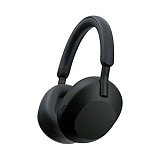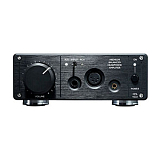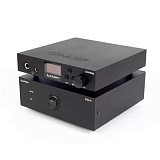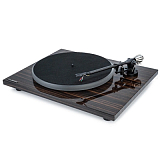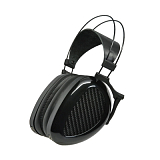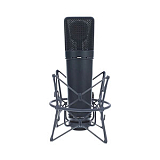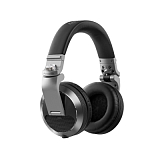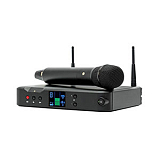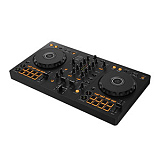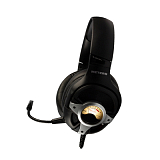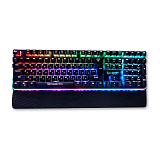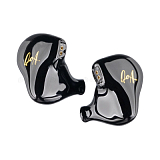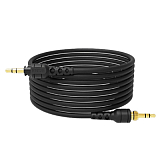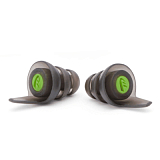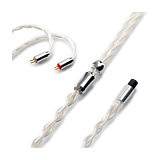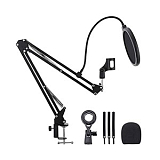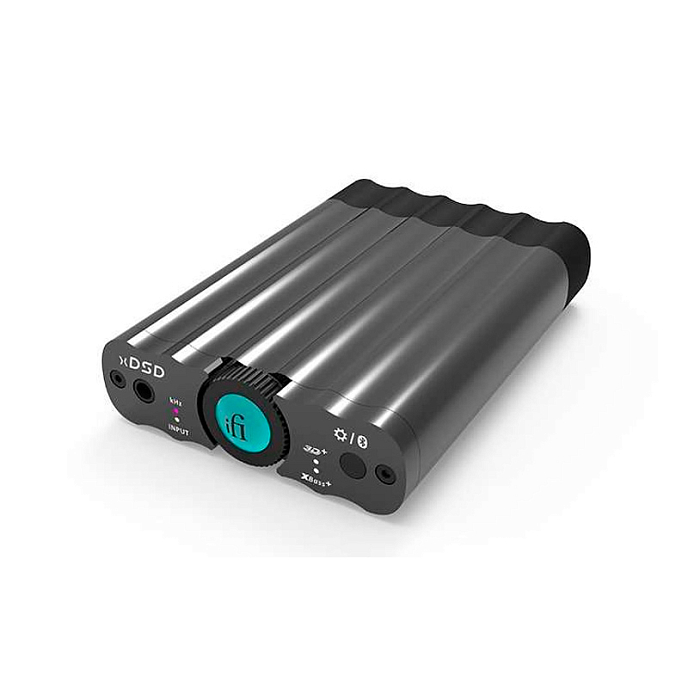XDSD can work both wirelessly and wired via aptX/AAC Bluetooth (wireless) or USB and S/PDIF inputs (combined optical/coaxial 3.5 mm). XDSD supports high-resolution formats (MQA and DSD) and includes an iFi S-Balanced 3.5mm TRRS headphone connector, providing 500mW of power per channel. In short, xDSD is a top portable high-precision audio device.
High-quality wireless connectivity is a key tool in its arsenal. With Bluetooth, xDSD can wirelessly connect to smartphones or DAPs, eliminating the need to carry multiple units together. Just imagine: your xDSD stays in your pocket while you listen to music, write text messages, or surf the internet. This ease of use transforms the user interface both on the go and at home.
Aesthetic Appeal When you first notice the xDSD, it becomes immediately apparent that it is unlike any other portable audio product on the market. The xDSD exudes luxury and style. The tactile, compact casing is made of a durable, ribbed magnesium-aluminum alloy. Molded plastic ensures unlimited Bluetooth transmission.
Loaded with the latest technology XDSD embodies this ambition. This section provides a detailed explanation of the technologies used and the functionality capabilities - how and why they did what they did, to make it easy to use while maintaining the highest sound quality, like AMR/iFi. XDSD is very similar to the micro-iDSD Black Label for a very good reason. Both products are built around the Burr-Brown DSD1793 D/A converter chip and have very similar digital and analog stages. The xDSD's digital section, taken from the micro-iDSD Black Label, supports formats DSD512/PCM 768 with DSD via DoP, direct DSD, equipped with A-type and S/PDIF USB inputs based on an XMOS scheme (USB) and clock generator, previously used in micro iDSD Black Label, with zero jitter level (clock generator was kindly provided by AMR Global Master Timing (GMT)). The Bluetooth section inside xDSD was previously used in the Retro Stereo50. In xDSD, the clock area not only covers USB, S/PDIF, and Bluetooth ports but also synchronizes the MCU (Master Control Unit).
Optimizing all formats (+MQA) In the manufacturing process, proprietary software code is created for xDSD to run with two specialized versions of XMOS firmware. v5.30 - pre-installed and optimized for MQA v5.20 - optimized for music file formats up to DSD512/PCM768 (without MQA) All the advantages of balanced connection Those who want to connect xDSD to a home system can set it to linear output mode, then the headphone jack becomes a 3.5mm linear output. xDSD is capable of remembering previous settings. The latest headphone amplifier cascade "CYBERDRIVE" The headphone amplifier stage "Cyberdrive" is one of the key new circuits in xDSD, which places all parameters of a completely analog system under digital control.
New Power Block The USB port on the back panel is used as a charging port. Power is not supplied through USB type A, as it is used for audio transmission. In addition, xDSD is equipped with a LiPo 3.8V/2,200 mAh battery (equivalent to 3.7V) providing 12% more capacity and throughput. The entire power scheme in xDSD is also subject to "Cyberdrive", which not only controls its status and constantly monitors the battery charge level, but also manages xDSD. Depending on the connected load and actual usage, to maximize battery playback time, one of two modes is automatically selected ("desktop" or "portative"). These functions were already implemented in the micro-iDSD Black Label, but still had to be manually enabled, whereas xDSD does everything automatically. Standalone playback time is 6-8 hours. 3D-Matrix+ and X Bass+ are also controlled via "Cyberdrive", Thanks to a purely analog volume control scheme, the maximum signal quality is preserved and its discrete functions 3D+ and XBass+ enhance both sensitivity and volume of the sound. If you use the Line Out output, the signal is sent bypassing both modes at 2V voltage. Features
S/PDIF input
USB input for connecting digital sources, it is designed in the form of a recessed plug, making it easier to use with Apple USB adapters and various USB OTG adapters
filter switch (more on it in the sound section)
MicroUSB charging socket and LED indicator used in the battery charging process
headphone output, it is 3.5mm, but also works with 4-pin balanced connectors of this size (HiFiMan standard) and with standard connectors with a common ground. Developers are especially proud that in the latter case, the sound quality is the same as with balanced connection
two LED indicators, with different colors indicating the selected input and signal frequency (including MQA)
volume control, combined with an indicator, it can also be pressed, being the main control unit of the device, so more about it below
two LED indicators for 3D+ and Xbass+ modes
button to switch these modes, also activates Bluetooth pairing mode Specifications
DAC: Burr-Brown DSD1793
Maximum USB resolution: 768 kHz/24-bit, DSD512
Maximum S/PDIF resolution: 192 kHz/24-bit
Dynamic range: >113 dB
Output power: >2.82V/500mW @ 16Ω, >3.8V/24mW @ 600Ω
Total harmonic distortion+noise: <0.005%
Output impedance: <1Ω
Bluetooth Codecs: aptX, AAC
Battery: 3.8V, 2200 mAh
Battery life per charge: up to 10 hrs. through S/PDIF, up to 8 hrs. through Bluetooth, up to 6 hrs. through USB
Dimensions: 95 mm × 66.5 mm × 19 mm
Weight: 127 g
Package contents
- DAC
- Three different USB cables/adapters
- Adapter for S/PDIF output
- Velvet pouch for device storage
- Self-adhesive "Velcro" strips for attaching the device to the source
- Documentation

